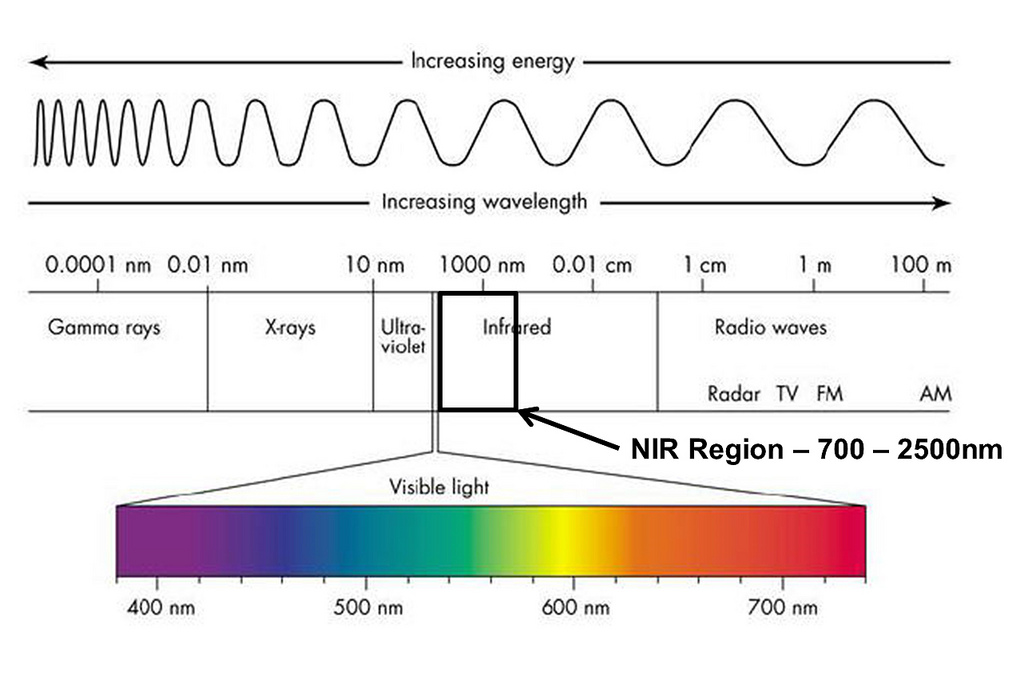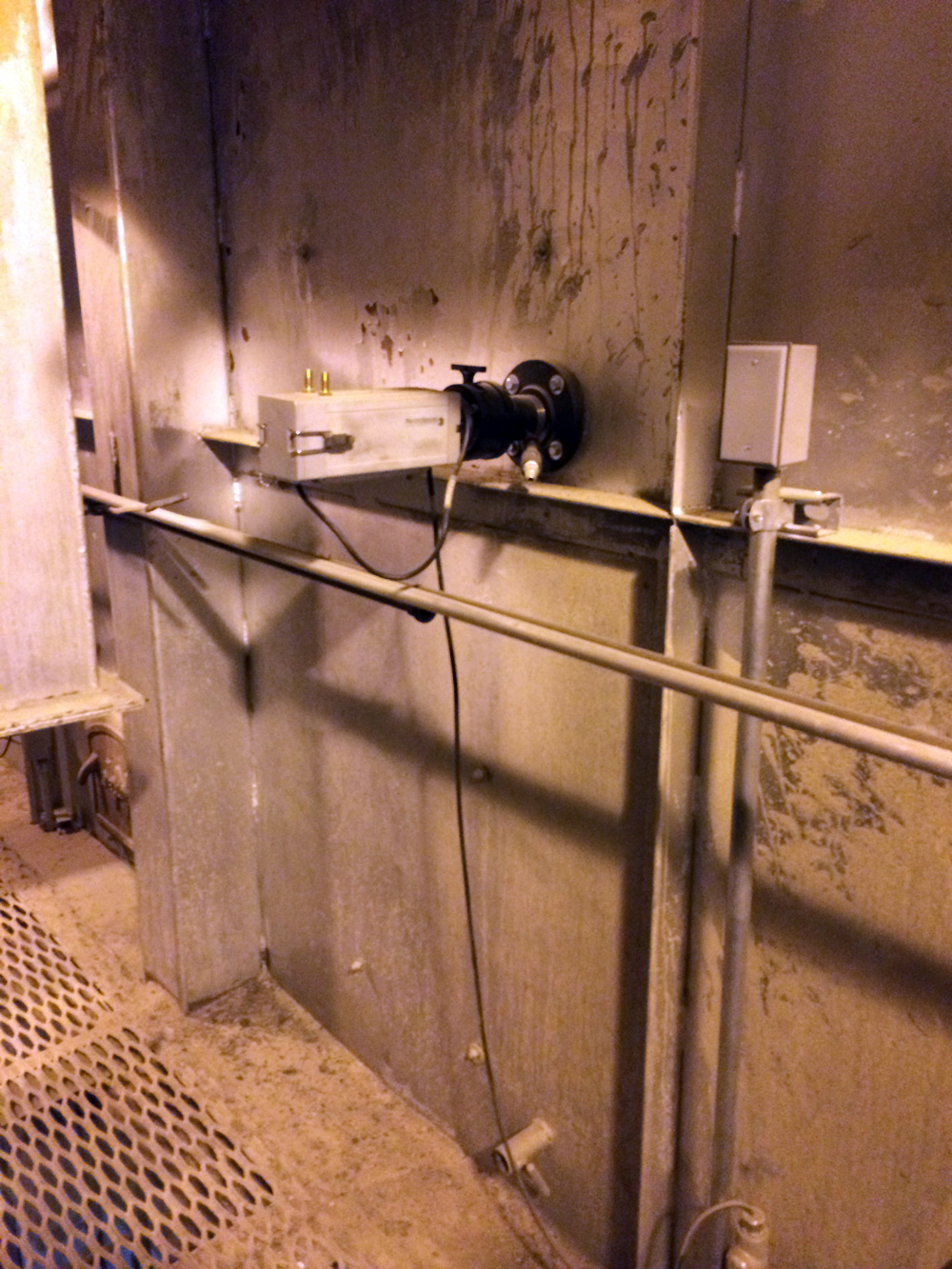
Near Infrared Measurements: How Do They Work?
Near Infrared Measurements are based on specific absorption bands in the electromagnetic spectrum between 800 and 2500 nanometers (nm). This region is just above the visible light region of 400 – 700 nm. Electromagnetic waves in the region have the best combination of energy, sensitivity, and absorption to be useful for quantitative measurements of solid materials.
While full-spectrum analyzers may utilize the entire spectrum and multivariate mathematical treatments such as Principal Component Regression (PCR), Partial Least Squares (PLS) or neural networks, photometers use “slices” of the spectrum that correspond to specific molecular overtones and associated vibrational absorptions.
Photometers utilize narrow bandpass interference filters that have a specified bandwidth typically 50 nm wide, though the bandwidth is sometimes application dependent. The NIR has broad bands as opposed to the sharp peaks in the Infrared region. Common bonds are O-H (1940 and 1420 nm) in water, C-H (2340 nm) in organics and oils and N-H in proteins. The NIR sensors are extremely sensitive instruments that are optimized to measure the absorbancies of samples at these specific wavelength regions. The quantity of the constituent to be measured us proportional to the absorbance level at these specific wavelengths.
Shining light at these wavelengths causes the corresponding chemical bond to vibrate and absorb energy.

Think of different sections of a stadium crowd called upon to shout and jump when their section is highlighted on the stadium Jumbotron.
Via Process Sensors.




